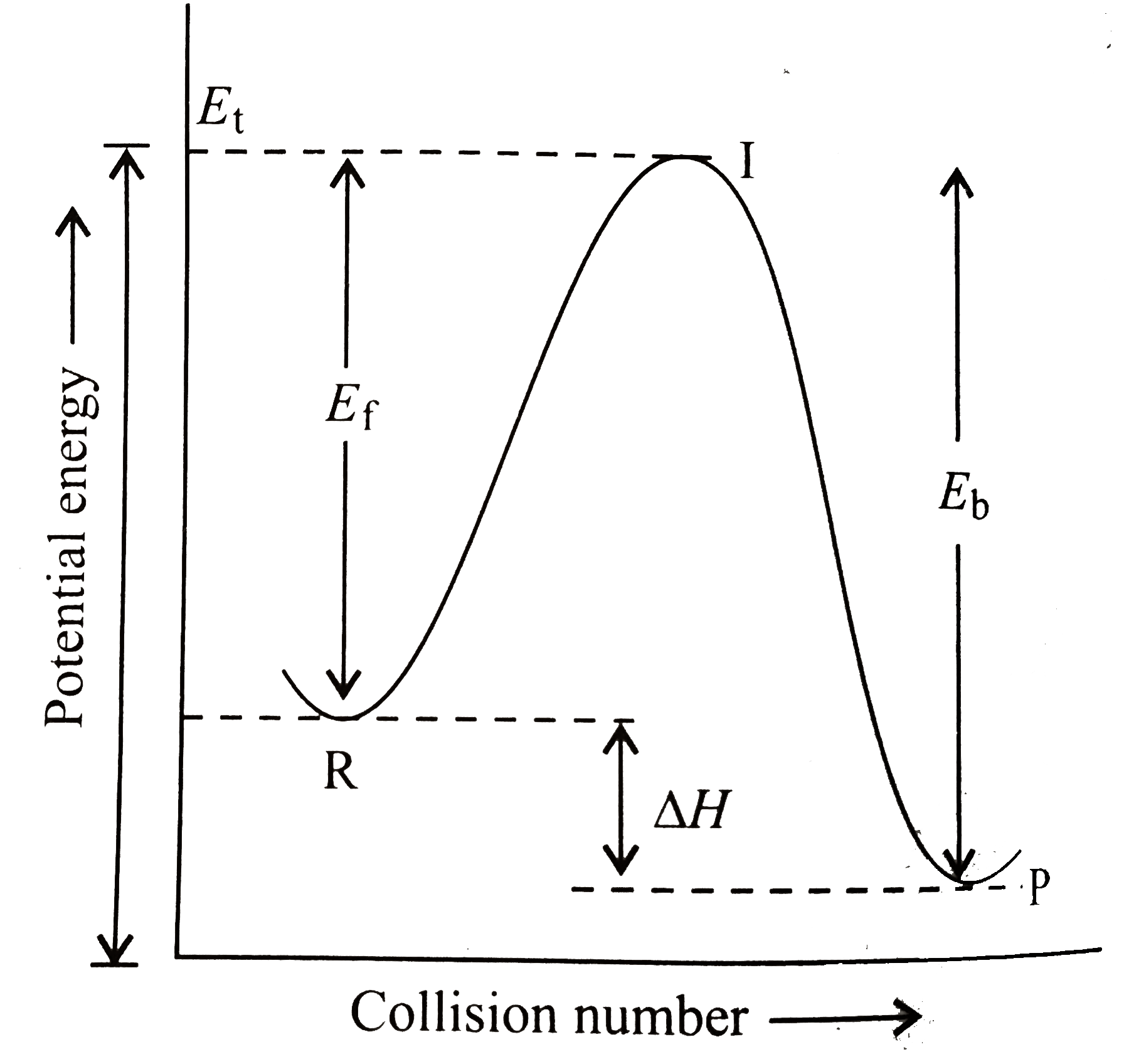The activation energies for forward and backward reactions are EfandEb respectively. If the reaction is exothermic then which is true regarding relation of activation energies?
Et>Eb
Ef<Eb
EF=Eb
There is no direct relation between EtandEb
The correct Answer is:B
To determine the relationship between the activation energies for the forward and backward reactions in an exothermic reaction, we can follow these steps:
Step 1: Understand the Definitions
- Activation Energy (Ea): The minimum energy required for a reaction to occur.
- Exothermic Reaction: A reaction that releases energy, usually in the form of heat, to the surroundings.
Step 2: Identify the Activation Energies
- Let Ef be the activation energy for the forward reaction.
- Let Eb be the activation energy for the backward (reverse) reaction.
Step 3: Analyze the Energy Profile
- In an exothermic reaction, the products have lower energy than the reactants. This means that the energy released during the reaction is greater than the energy required to initiate the reaction.
Step 4: Relate the Activation Energies
- For an exothermic reaction:
- The activation energy for the forward reaction Ef is less than the activation energy for the backward reaction Eb.
- This is because the forward reaction requires less energy to proceed (as it is moving towards a more stable state), while the backward reaction requires more energy to overcome the energy barrier to revert to the reactants.
Conclusion
Thus, the relationship can be summarized as:
Ef<Eb
Final Answer
In an exothermic reaction, the activation energy for the forward reaction is less than that for the backward reaction.
- Activation Energy (Ea): The minimum energy required for a reaction to occur.
- Exothermic Reaction: A reaction that releases energy, usually in the form of heat, to the surroundings.
- Let Ef be the activation energy for the forward reaction.
- Let Eb be the activation energy for the backward (reverse) reaction.
- In an exothermic reaction, the products have lower energy than the reactants. This means that the energy released during the reaction is greater than the energy required to initiate the reaction.
- For an exothermic reaction:
- The activation energy for the forward reaction Ef is less than the activation energy for the backward reaction Eb.
- This is because the forward reaction requires less energy to proceed (as it is moving towards a more stable state), while the backward reaction requires more energy to overcome the energy barrier to revert to the reactants.
Thus, the relationship can be summarized as:
Ef<Eb
In an exothermic reaction, the activation energy for the forward reaction is less than that for the backward reaction.
Similar Questions
Knowledge Check
Which of the following reactions has zero activation energy?
A B
B C
C D
D
Activation energy of the reaction is :
View SolutionIf the activation energies of the forward and backward reactions of a reversible reaction are Ea(f) and Ea(b), respectively. The ΔE of the reaction is ………..
View SolutionDefine activation energy of a reaction.
View SolutionDefine activation energy of a reaction.
View SolutionDefine activation energy of a reaction.
View SolutionA colliison between reactant molecules must occur with a certain minimum energy before it is effective in yielding Product molecules. This minimum energy is called activation energy Ea Large the value of activation energy, smaller the value of rate constant k. Larger is the value of activation energy, greater is the effect of temperature rise on rate constant k.

Ef= Activation energy of forward reaction
Eb= Activation energy of backward reaction
ΔH=Ef−Eb
Ef= threshold energy
In a hypothetical reaction A→B, the activation energies for the forward and backward reactions are 15 and 9kJmol−1, respectively. The potential energy of A is 10kJmol−1. Which of the following is wrong?
View SolutionThe activation energies of the forward and backward reactions in the case of a chemical reaction are 30.5 and 45.4kJ/mol respectively. The reaction is:
View Solution
